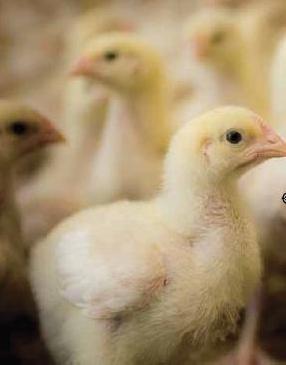Essential oils and acids: synergy makes them work

Pathogenic bacteria like E. coli and Salmonella are becoming an increasing threat for pig and poultry production. Recent experiments show that it is possible to effectively inhibit these undesired bacteria with a combination of organic acids and essential oils. Albert van Dijk shares the results.
By: Albert van Dijk
Not only can E. coli and Salmonella cause disease in farm animals such as pigs and poultry, but they can also cause disease in human consumers who are reached via the food chain. Governments react to this threat by applying legislation to prevent the bacteria from entering the food chain.
These developments form a challenge for the whole production chain, including feed mills, producers and the packing industry. A further development that accomplishes an effective preventive strategy is the suppression of the use of antibiotics in pig and poultry production – already legislated in the EU and being followed by the rest of the world. Due to this a lot of research has been carried out to find alternative substances for antibiotics to fight Salmonella and E. coli. A promising solution has been found in the combination of organic acids and essential oils as a feed ingredient. In recent years more evidence has originated from laboratory experiments and animal trials demonstrating the synergistic antibacterial effect of organic acids and essential oils. Greater insight into the mode of action has also been achieved. Organic acids are already the number one alternative choice for antibiotics in feed or drinking water, of which formic and lactic acid are the most used. Essential oils are natural substances that plants produce to defend themselves against bacterial infections. Examples are thymol and carvacrol that can be derived from plants like oregano. They are used as a preservative for food products.
Synergistic effect
Recent experiments at different laboratories have demonstrated the synergistic effect between essential oils and organic acids on inhibiting bacteria. Feng Zhouet al. (2007) showed that the combination of e.g. thymol and acetic acid killed off Salmonella far more effectively than the two substances did when dosed on their own (Figure 1). This research demonstrates that the principle holds true for different combinations of organic acids and essential oils. Experiments that CCL Nutricontrol laboratories from the Netherlands conducted for Perstorp Performance Additives showed similar results. The experiments were conducted with pathogenic E. coli bacteria in a matrix that is representative for in feed use (Figure 2). It demonstrates that E. Coli is also very susceptible to the mix of organic acids and essential oils.
Mode of action
Further insight into the mode of action of essential oils against bacteria has recently been found. Experiments from the Veterinary Faculty of the University of Utrecht (the Netherlands) show that carvacrol, derived from Oregano, damages bacterial cell walls from E. coli (Figure 3). It also became apparent that the essential oil prevented the E. coli bacteria forming flagella.
Without flagella the bacteria will not be able to move themselves limiting their possibilities for growth and multiplication. Feng Zhouet al (2007) state that organic acids boost the effectiveness of essential oils; they move the active components from their dissociated form to their molecular form. The molecular form is freely permeable across the bacterial cell wall and thus is able to enter and damage the bacteria. On the other hand the cell wall damaging effect of essential oils permits organic acids to enter the bacteria and disrupt them. This is especially the case with neutral pH conditions as found in the small and large intestine, because most organic acids are then in the dissociated form that is unable to penetrate the bacterial cell wall.
Effects in practice
To check whether the combination also works in practice, we conducted an experiment at the CCL research farm with broiler chickens that were infected with Salmonella. The Salmonella type used does not cause disease in the broiler chickens, but it is representative for Salmonellas that cause problems in the food chain.
It was demonstrated that a specific combination of organic acids and essential oils (ProPhorceS PH, Perstorp Performance Additives), dosed 0.3% in the feed significantly reduced the incidence of Salmonella in the broiler chickens by 23.6% in the first two weeks after infection.
Manzanillaet al. (2004) also demonstrated a synergistic effect of formic acid and essential oils in piglets.
They found that the combination of the two induced better feed utilisation (gain:feed) and less mortality by E. coli, when compared to the additives given alone (Figure 4). Field trials conducted with broiler chickens and fattening pigs also showed that the combined products gave a significant improvement of feed conversion ratio and daily gain (data published elsewhere).
Natural antibacterials
The experiments described show that it is possible to effectively inhibit undesired bacteria in pigs and poultry with natural products such as organic acids and essential oils. Organic acids are derived from natural fermentation processes and essential oils are produced from plants. The synergistic effect allows a reduction of the dosages, making it more cost effective.
Its application can not only reduce the incidence of Salmonella and E. coli in pigs and poultry, but also offers an effective alternative for antibiotics. In this way not only disease in those animals can be prevented, but preventing the pathogens entering the food chain is also beneficial for public health.
Furthermore it can prevent the formation of multi-resistant pathogens in human medicine. Because the combined additives give a better growth performance in pigs, they can serve as an effective alternative for anti microbial growth promoters as well.
References are available on request from the author (albert.vandijk@perstorp.com)
Source: Feed Mix Vol 17 No. 1 (2009)











